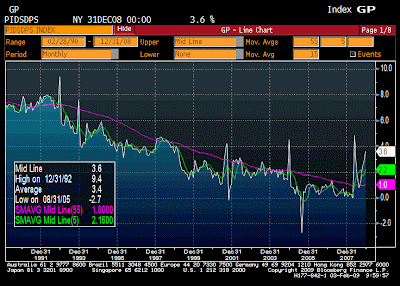"Forgone spending meaning forgone income for someone else" ... see "Paradox of Thrift"
savings glut
The "savings glut" theory is one of the two main competing theories to explain some of the bigger mysteries of global finance in recent years (including the credit crisis of 2007 )
One theory is the "savings glut", the other the "money glut" theory. The "savings glut theory"....which has some pretty impressive followers...
Who is to blame?
I read somewhere..."the Chinese may have supplied the noose, but it was the US that strangled themselves"
thats probably the most accurate way of reconciling the "savings glut" vs "money glut" theories...
More on the "Savings Glut"
read this: http://www.federalreserve.gov/boarddocs/speeches/2005/200503102/
In 2006, 2007 and 2008 the developing world’s savings was around 33% of its GDP, well above its 24% average in the late 80s and 90s.
That allowed emerging economies to both increase investment above their historic levels (think of all the construction in the Gulf and China) and at the same time lend unprecedented sums to the US and increasingly Europe. (Graph here)
Wynne Godley (ideologically, no Hank Paulson), Dimitry Papadimitrriou and Genaaro Zezza seem to agree. They write: “The process by which U.S. output was sustained through the long-period of growing imbalances could not have occurred if China and other Asian countries had not run huge current account surpluses , with an accompanying “savings glut” and a growing accumulation of foreign exchange reserves …. flooding the US market with dollars and thereby helping to finance the lending boom. Some economists have gone so far as to suggest that the growing imbalance problem was entirely the the consequence of the savings glut in Asian and other surplus countries. In our view, there was an interdependent process in which all parties played an active role. The United States could not have maintained growth unless it had been happy to sponsor, or at least permit, private sector (particularly personal sector) borrowing on such an unprecedented scale.”
Thanks to Martin Wolf for highlighting the Godley et al paper.
On the other hand...
Average investment rates in the developing economies by then were well above their historical averages – around 29% in 06-08 v 25% in the 80s and 90s — even as the developing economies were running record current account surpluses.
read more... http://blogs.cfr.org/setser/2009/01/09/the-global-savings-glut-and-the-current-crisis/
US savings deficit:
US national savings was 14% of US GDP in 2007 — and 12.5% in 2008; it was more like 16% of GDP in the late 80s and 1990s.
high levels of household borrowing to support high levels of current consumption kept the US household savings rate down.
Will that change?
The latest data on the US savings rate show an uptick to 3.6%; this is the highest non-distorted (via stimulus packages or Microsoft dividends) rate in more than a decade.
 Regardless of the size and nature of any stimulus, household savings are on an inexorable upwards trend for another few years. And that spells trouble for those countries and companies whose growth model is based on selling stuff to Americans.
Regardless of the size and nature of any stimulus, household savings are on an inexorable upwards trend for another few years. And that spells trouble for those countries and companies whose growth model is based on selling stuff to Americans.
see more: USA macro data
The rise in China’s savings rate comes from firms and the government, not households
The popular explanation is that it is all because frugal households have been saving a bigger slice of their income in response to uncertainty over pensions and social welfare—uncertainty that will presumably increase in a recession.
But this doesn’t quite fit the facts. In many countries, notably South Korea and Taiwan, household savings have fallen relative to income in the past decade; in China they have been broadly flat. (The rise in China’s savings rate comes from firms and the government, not households.)
If households are not saving more, why has consumer spending declined as a share of GDP? The answer is that wage incomes have fallen relative to GDP. In China the share of wages dropped from 53% in 1998 to 40% in 2007.
source: http://www.economist.com/finance/displaystory.cfm?story_id=13022067#
Comments (0)
You don't have permission to comment on this page.